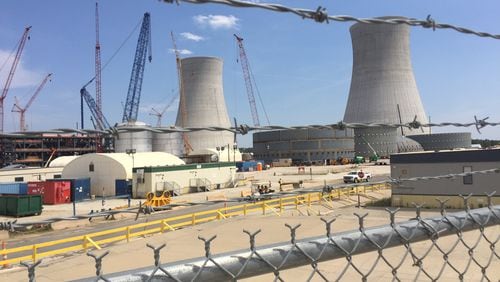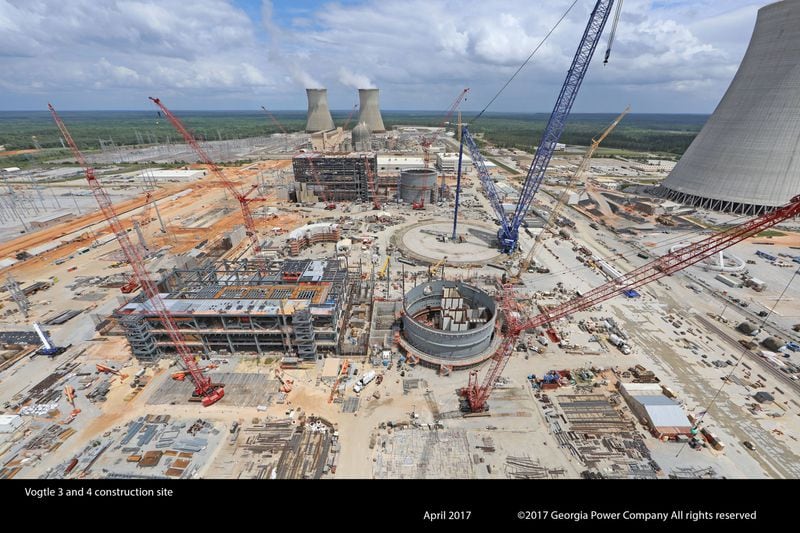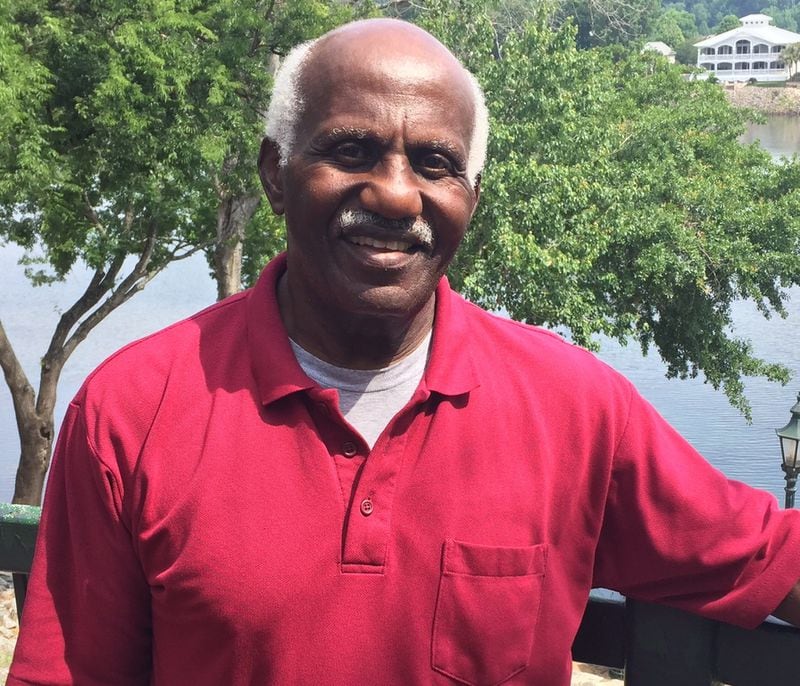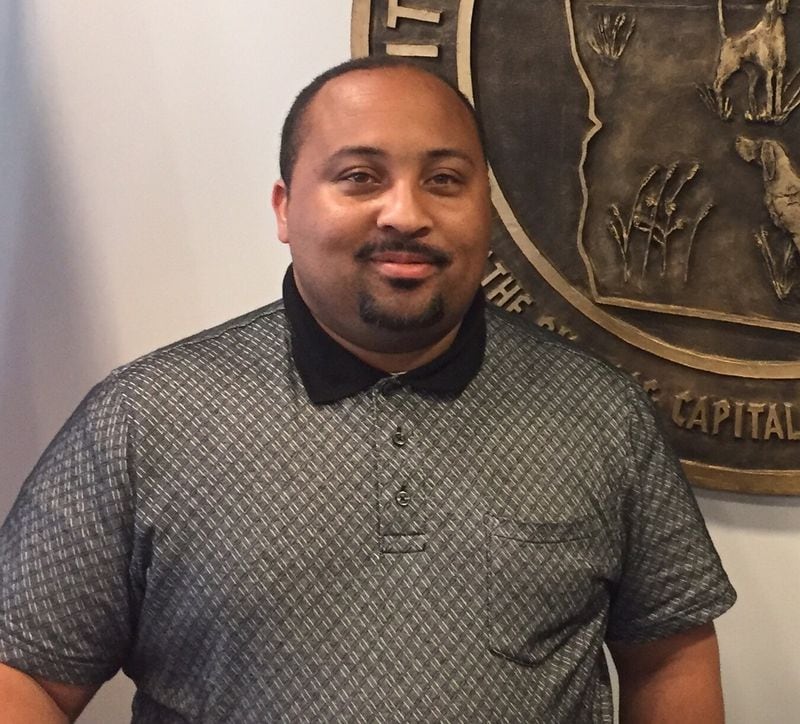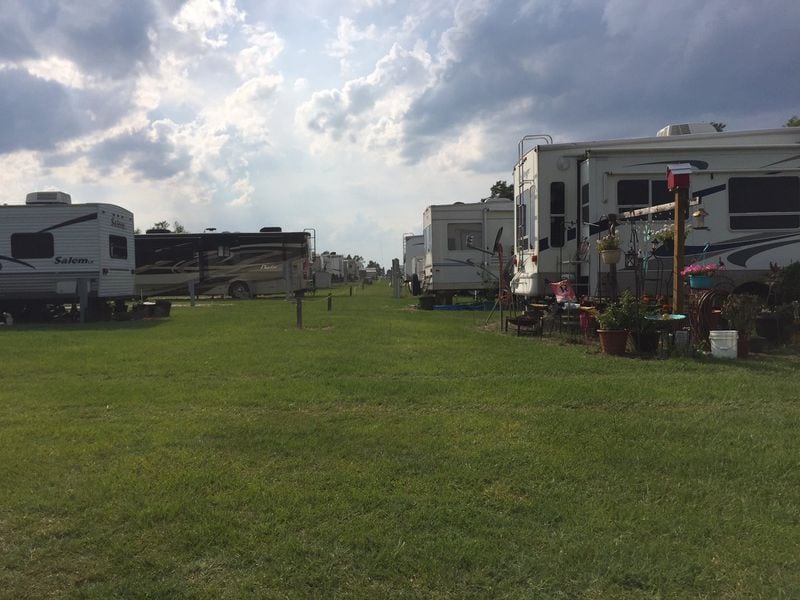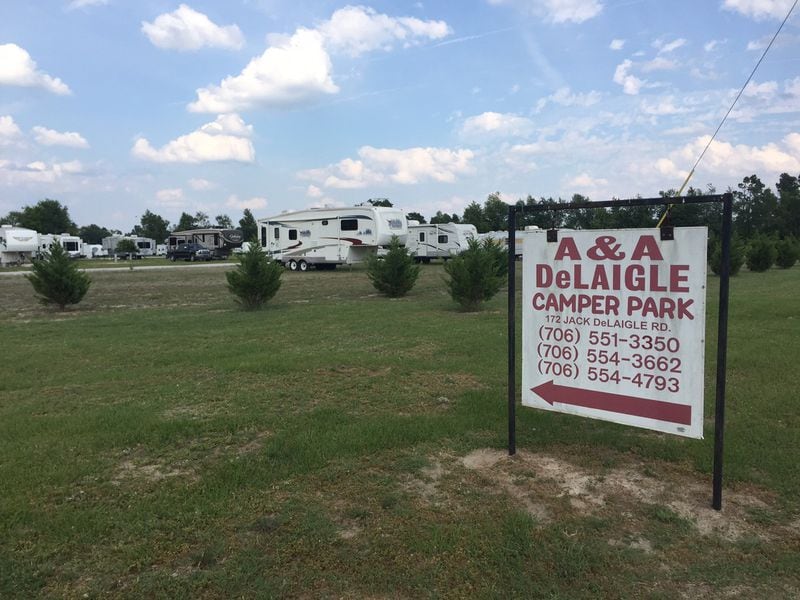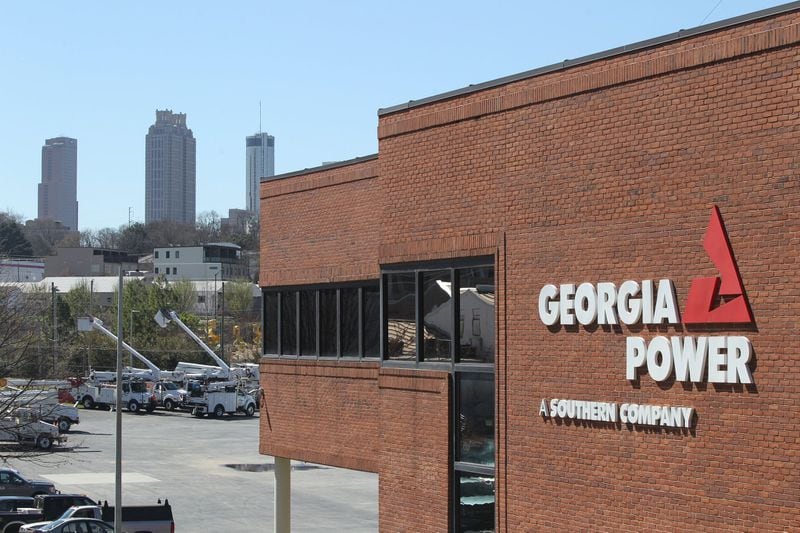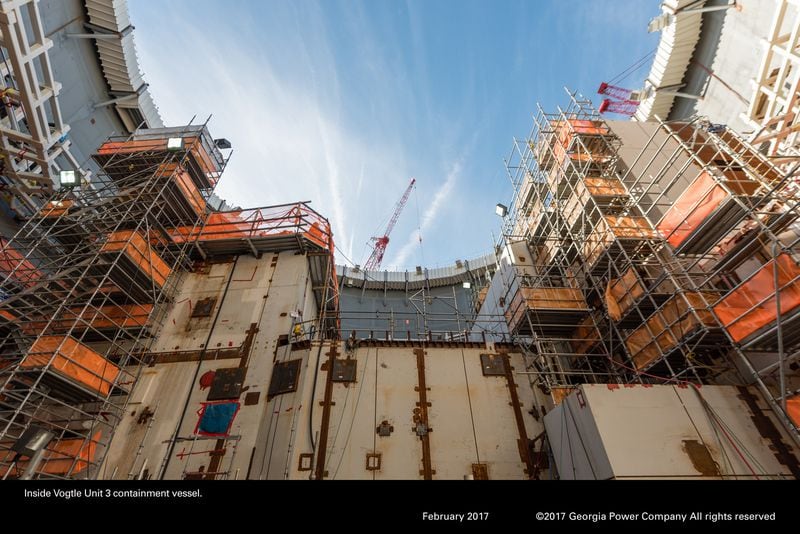Southern Company’s chief executive has said more than once that the giant utility’s project to build two more nuclear reactors at Plant Vogtle would be history-making.
He may be right, but not in the way he meant.
Years behind schedule, billions over budget, and with a key contractor’s bankruptcy clouding its future, the troubled Vogtle project near Augusta is fast becoming Exhibit A for why no U.S. utility before Atlanta-based Southern had tried building a new reactor in 30-plus years.
Most Georgians who get electric bills could eventually pay for overruns on the project that are likely to grow. Customers of Southern subsidiary Georgia Power already pay a Vogtle-related surcharge that adds about $100 a year to the average residential bill, with the ultimate effect on ratepayers yet to be determined.
Also uncertain is how the project will get done.
On March 29, Westinghouse Electric, the company that designed the new Vogtle reactors and eventually became the primary contractor on the project, filed for bankruptcy. As part of its Chapter 11 restructuring, the company is expected to ditch the fixed-cost contracts that led to billions in losses on its work at Plant Vogtle and a similar nuclear project in South Carolina.
Under an interim deal announced a week ago, Southern and Georgia Power plan to take over running the Vogtle expansion, which is not quite half-done. Westinghouse will still help, but in a smaller role.
Beyond that they face a more elemental decision: spend billions more finishing the reactors, convert the project to another type of power plant such as natural gas, or just abandon it — leaving two dormant cooling towers and skeletal buildings.
A Georgia Power spokesman said the company is doing a “full-scale” study to “determine the best path forward.”
The utility has acknowledged that Westinghouse’s bankruptcy will mean more delays and costs. The elected members of the Georgia Public Service Commission eventually will determine the actual construction costs to be borne by ratepayers.
Meanwhile, Southern CEO Thomas Fanning, who as recently as last year said the project was going "beautifully," got a 2016 compensation package worth $15.8 million, including a $2.7 million bonus.
Clean power for millions
The new Vogtle reactors are supposed to eventually supply clean power for 1.5 million homes. But the project is currently $3.6 billion over budget and almost four years behind the original schedule, under which the reactors were supposed to be about finished by now.
Georgia Power spokesman Jacob Hawkins acknowledged that the company’s bid to produce what would amount to a demonstrator project for new nuclear power capacity has been beset by challenges.
“As you note, no new nuclear plants have been built in the United States in more than three decades,” he said in an emailed response to questions from the AJC.
“That’s key, as construction challenges for the Vogtle nuclear expansion have largely been associated with reestablishing a nuclear construction supply chain that hasn’t existed in decades. Building it safely and correctly for customers has been our priority since we started the project …”
Richard Nephew, a senior research scholar at the Center on Global Energy Policy at Columbia University, said the utility underestimated the costs of replacing a vanished industry of nuclear construction workers and suppliers.
Ultimately, Nephew expects the reactors to be built — with a still higher price tag. “The utility certainly wants the reactors. They certainly have sunk a lot of money in it. Everybody is going to end up paying a little bit more.”
Mark Cooper, of the Institute for Energy and the Environment at Vermont Law School, also expects Southern to forge ahead. But he said the project’s issues show that nuclear plants are still too complex and expensive to build while meeting stringent safety regulations.
“You can’t change the economics of the industry,” he said. “The technology is too difficult to build.”
Faith shaken
Charles Utley, who pastors a Baptist church near Vogtle, has been watchdogging the plant for seven years as part of the Blue Ridge Environmental Defense League, a group that tried unsuccessfully to convince the U.S. Nuclear Regulatory Commission to halt the project.
Utley said the threat to Georgians is both environmental and financial. He worries the construction problems could translate to structurally unstable reactors.
“If you complete it, is it going to be up to quality?,” Utley said. “Are we going to complete it just to say we finished the project? And will we ever get out of debt?”
Westinghouse’s financial meltdown has rattled even the most loyal Plant Vogtle supporters – those living in the shadows of the towers in rural Burke County, population 23,000, who rely on the plant for a stable economy and a flush tax digest.
Greg Carswell, the just-elected mayor of nearby Waynesboro, was campaigning when news of the Westinghouse bankruptcy filing broke. A Vogtle construction worker called him at home at 1:30 a.m., asking Carswell if he’d heard whether workers would lose jobs.
“At first people were nervous,” Carswell said. “They were borderline hysterical because they thought, ‘Hey, we’re going to be out.’ Because you just heard rumors going and going.”
Fears of mass layoffs subsided once Georgia Power told workers that the project would continue while the company looked at options.
“Georgia Power has been keeping great communication between themselves and the people that are working,” said Carswell, whose father is a subcontractor at the site. “So now everybody feels more comfortable.”
Plant Vogtle’s main economic impact on the area comes from two existing reactors, units 1 and 2, that have been operating since the late 1980s. But the area also has profited from some 6,000 workers — many itinerant construction laborers — who are at work on units 3 and 4.
“Some of the people that come from out of town, they’re staying here,” Carswell said. “They’re visiting our shops. They’re visiting our restaurants. They’re shopping. They’re buying gas.”
Along the two-lane highways near the plant, trailer parks punctuate the fields, pastures and forests. Signs advertise RV spaces and cabins for rent. Convenience stores bustle with foot traffic.
Some are within sight of the plant’s four big cooling towers, only two of them pumping out steam.
History repeats itself
Delays, cost overruns and contractor snarls were not part of the picture government and industry officials painted in 2009 when state regulators approved the project to add the new reactors.
In addition to arguing it was needed to help power Georgia’s growth, Fanning called the Vogtle expansion a “national priority” to help revive the U.S. nuclear power industry. It would be a “renaissance,” he said.
But construction of Plant Vogtle’s first two reactors had provided a vivid example of the potential complications.
Plant Vogtle was conceived around 1970, with an original cost estimate of about $660 million. Construction was expected to take about eight years. Then, Three Mile Island happened. Regulations tightened. Demand for materials and interest rates shot up in the 1980s.
Construction took 13 years. The final price tag: around $9 billion.
Unit 1 started making electricity in 1987, followed by unit 2 in 1989.
By then plans for further nuclear development were scuttled by the combination of cost issues, fears spawned by Three Mile Island and Chernobyl and tougher safety requirements.
In the early 2000s, the winds changed again. Prices for oil and natural gas soared. The federal government offered billions of dollars in incentives for new nuclear plants — partly to cut utilities’ contribution to global warming. Some environmentalists supported the move.
Federal regulators simplified nuclear plant licensing. Reactor designers, including Westinghouse, touted new models they said were safer, cheaper and easier to build.
Vogtle’s expansion took off on a high-octane combination of $8 billion in federal loan guarantees, potentially billions more in federal tax credits, and incentives from Georgia. That included a controversial 2009 law passed by the legislature allowing Georgia Power to pre-bill customers for financing costs. It had collected almost $1.2 billion by the end of 2016, according to documents filed with the PSC.
Despite the incentives and political support, timing soon turned against the project again.
The Great Recession caused demand for electricity to crash, and demand is still nowhere near what Georgia Power projected. That’s partly because homes and businesses are using ever more efficient light bulbs, appliances and other equipment.
Fracking technology led to lower prices for natural gas, a competing fuel, and solar and wind energy projects have also become cheaper, whittling away at the economic case for Vogtle’s new units.
The 30-year hiatus also brought construction challenges. Nephew, of the Center on Global Energy Policy, said a generation of utility workers, suppliers and regulators had no experience with building new nuclear power plants, and had to learn on the job.
“We don’t build that many reactors any more, so everything you do is for the first time,” he said.
A renaissance unravels
The project was soon plagued with glitches and delays. Soil at the site didn’t meet specifications, requiring new dirt to be trucked in at a cost of more than $58 million. Some structural work didn’t fit the designs, leading to more delays. Fewer suppliers meant less competition and higher costs for some components.
The Fukushima Daiichi nuclear disaster in Japan in 2011 and other safety concerns prompted regulators to re-think some requirements, leading to other design changes and delays.
Along the way, lawsuits broke out between Georgia Power and contractors, and between contractors and contractors, over the cost of dirt work and other issues.
In an umbrella settlement, Georgia Power and the smaller utilities that co-own the plant agreed to pay $760 million to the contractors. Westinghouse also agreed to take on a bigger role in the project, buying another contractor’s nuclear construction unit.
The PSC approved the settlement late last year. In the process it approved up to $7.75 billion of Georgia Power's share of Vogtle costs, including financing costs. But it also set profit penalties if the utility didn't complete the nuclear units by the end of 2020.
But within a few months, Westinghouse was headed to bankruptcy court after wracking up billions of dollars of losses on Vogtle and a similar South Carolina project for SCANA, a utility based there.
The losses have nearly sunk not only Westinghouse but also its parent company, Tokyo-based electronics icon Toshiba Corp., which Southern says owes $3.7 billion in guarantees on the Vogtle project. Toshiba, known best for laptops and TVs, had bought Westinghouse in 2006 to get in on what was then considered a nascent nuclear revival.
Shortly after Westinghouse’s bankruptcy filing, Georgia Power said it won’t be able to meet the PSC’s 2020 deadline.
A lesser boom
However the Vogtle expansion plays out from here, it won’t likely be held up as the model it was intended to provide.
Of the dozens of new reactor projects once being considered for licensing by the Nuclear Regulatory Commission, all have been shelved except the Vogtle and South Carolina projects. Georgia Power has tabled plans to study a new nuclear plant south of Columbus, citing slowing demand growth.
Nephew doesn’t believe this spells the end of commercial nuclear power. Huge reactors may be a thing of the past because of how long and how much money it takes to build them, he said. But it may not be too many years, he said, before factories are turning out small, modular nuclear reactors that produce a fifth or even a 30th of the power that each of Vogtle’s 1,100 megawatt units are supposed to produce someday.
“Town-sized,” he said, “rather than county-sized.”
In Burke County, most people seem to think the reactors will eventually get built, just like the first two.
The plant for years has paid about 75 percent of Burke County’s property taxes, according to County Administrator Merv Waldrop. Construction of 3 and 4 has bumped the contribution up to 82 percent, he said.
“If something were to happen at Vogtle, slowing construction down or stopping it temporarily, we’d feel a little impact, but it’s not going to devastate us,” generally speaking, Waldrop said. “Individual businesses, and some individuals who work for those businesses, it will have a big impact.”
Jim Stevens, from Fairburn, and his wife have been living in a trailer and a Winnebago at the A & A DeLaigle Camper Park for the past three years. He drives a tractor trailer for contractor Fluor, delivering structural steel.
Stevens said some transient workers have lost confidence and left the area. He’s staying put.
“Georgia Power can’t afford to not build it, I think,” he said. “Somewhere, Westinghouse and Toshiba and Georgia Power will get together overseas, and they’ll do something about it, probably.”
MYAJC.COM: REAL JOURNALISM. REAL LOCAL IMPACT.
AJC Business reporter Russell Grantham keeps you updated on the latest news about major companies, CEOs and public utilities in metro Atlanta and beyond. You'll find more on myAJC.com, including these stories:
Never miss a minute of what's happening in local business news. Subscribe to myAJC.com.
THE STORY SO FAR
— Completion of two new nuclear reactors at Plant Vogtle, near Augusta, was originally expected by 2016.
— Delays arose even before construction began in 2013, and key contractor Westinghouse's Chapter 11 filing is expected to worsen the cost overruns and delays.
— Georgia Power and parent Southern Company must decide how — or whether — to finish the project. How the outcome will affect electric bills will be up to the Georgia Public Service Commission.
PLANT VOGTLE TIMELINE
1970: Georgia Power's board of directors votes to build a four-unit nuclear power facility, to be named for Alvin W. Vogtle Jr., then president of parent Southern Co.
1971: Georgia Power announces plans to build two, 1,110-megawatt reactors on the Savannah River in Burke County. The initial cost estimate is $660 million.
1977: Construction resumes, having halted three years earlier because of Georgia Power's inability to finance construction. At this point, the cost estimate is $2.7 billion.
1989: Reactor 2 goes online, making the plant fully operational. Construction was supposed to take eight years. But it takes 13 years and a total cost of $9.2 billion.
2006: Georgia Power seeks permission from the PSC to bill customers for $51 million in planning and licensing costs for a new Georgia nuclear plant.
2009: Georgia Power gets PSC approval to build two more reactors at Plant Vogtle. State lawmakers allow Georgia Power to collect a surcharge to back the project; it now costs the typical residential customer about $100 a year. Site work begins.
2013: Construction of the reactors begins. The project is to be completed in 2016 at a total cost of $14 billion.
2015: Georgia Power and Vogtle's construction contractors sue each other over delays that have added more than $3 billion and three years to the completion date. In a settlement, Toshiba's Westinghouse unit takes a bigger role running the project and Georgia Power pays a $760 million settlement.
December 2016: In a settlement with regulators, Georgia Power agrees to controls on the project's costs, along with profit penalties if it isn't completed by the end of 2020.
February 2017: Toshiba reveals a $6 billion loss on its U.S. nuclear projects, including Vogtle, and says it is not seeking any new nuclear business.
March 2017: Westinghouse files for Chapter 11 bankruptcy protection. It is expected to seek to exit its nuclear contracts during a court-supervised financial reorganization.
May 2017: Georgia Power and Westinghouse announce a tentative agreement for the utility and Southern Nuclear to take over project management indefinitely from the bankrupt contractor. Georgia Power does not indicate what its long-term plans are — whether it will complete construction under different management, convert the project to another type of power plant, or abandon it.
MEMORABLE QUOTE
“We think this is going to be, when you look back on it, one of the greatest mega projects in modern American industrial history.”
Southern Company CEO Tom Fanning in 2016, talking about the Plant Vogtle expansion in an interview on CNBC.
PLANT VOGTLE FACTS
— One of two nuclear power plants in Georgia. The other is Plant Hatch, near Baxley.
— Jointly owned by Georgia Power (45.7%), Oglethorpe Power (30%), Municipal Electric Authority of Georgia (22.7%) and Dalton Utilities (1.6%).
— About 900 people oversee operation of units 1 and 2, which have produced power since the late 1980s.
— Operating license extended in 2009 for 20 years.
— Named for Alvin W. Vogtle, who led Southern Company from 1969 to 1983. Vogtle had another claim to fame: He was a World War II POW whose repeated escape attempts from German prison camps — the last one successful — were said by some to have inspired the Steve McQueen character in the movie “The Great Escape.”
